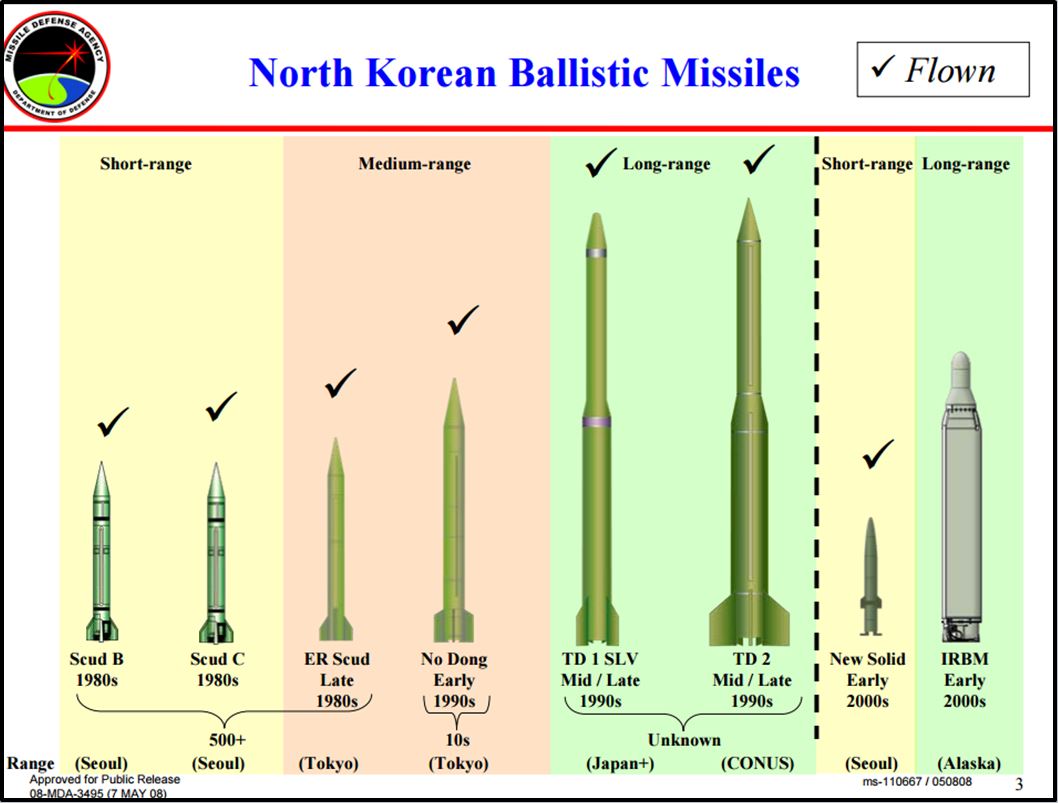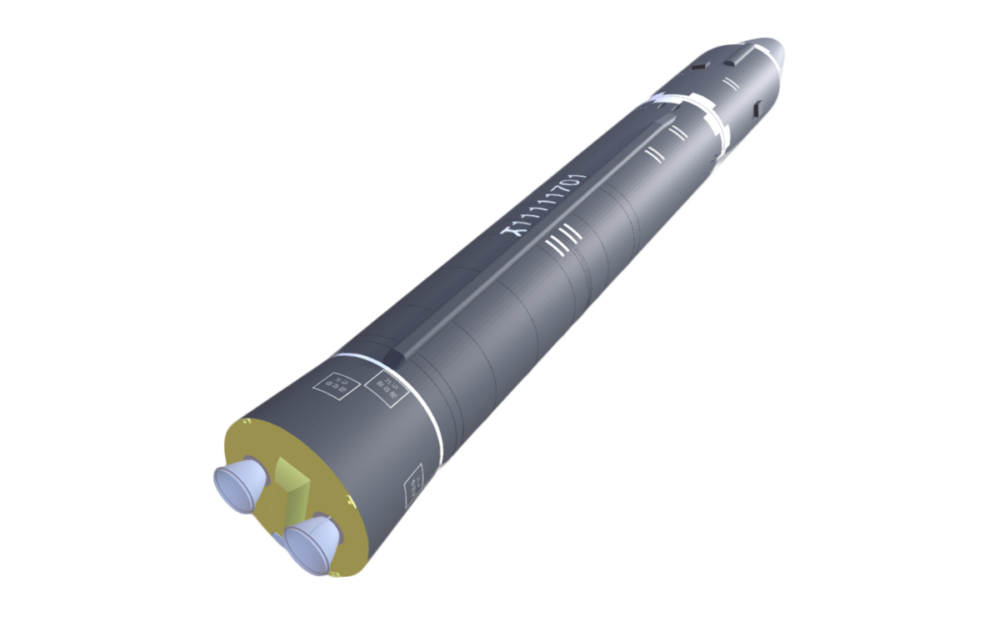
Jeffrey Lewis
Director of the East Asia Nonproliferation Program, The James Martin Center for Nonproliferation Studies
On Monday, North Korea fired three ballistic missiles from the Reunification Highway near Hwangju. The missiles flew 1000 km, landing just outside Japan’s territorial waters near the island of Hokkaido.
Initial reports about the type of missiles fired were confused. At first, STRATCOM described two of the missiles as intermediate-range ballistic missiles and a third type as “still being assessed.” [1] Later, STRATCOM announced that all three missiles were presumed to be Nodong-type missiles. Images released by North Korea, however, tell a more interesting story. The missiles fired appear to be Extended Range Scud missiles, also known as the ER Scud. The pictures are the first images of the ER Scud that have been seen publicly, and raise significant proliferation concerns.
Click the play button to learn more about the ER Scud with this interactive 3D model
Rumors of an ER Scud appeared in the Korean press in 2005. The Chosun Ilbo reported that, according to a government source, the United States identified the Extended Range Scud in satellite images in 2003 or 2004. [2]
The ER Scud subsequently appeared in public U.S. assessments of North Korea’s missile program after 2008. Some estimates described the ER Scud as being a cross between a Scud and a Nodong in size.
The estimates indicated that North Korea had already-flight tested the ER Scud and assessed its range as between 700 and 1000 km. By contrast, Scud B and Scud C missiles have a range of 300 km and 500 km, respectively.
The missiles fired on Monday appear to be consistent with these descriptions. Estimates of the missile, based on models created by Nathaniel Taylor of the Center for Nonproliferation Studies, suggest it is approximately 1 m in diameter, making it wider than a Scud (.8 m) but narrower than a Nodong (1.3 m). It may also make use of a lighter-weight aluminum airframe, compared to the Scud’s steel airframe.
The most recent missile launch seems to confirm that the ER Scud has a range of 1,000 km. In June 2016, the Joongang Daily reported that a joint assessment by the United States and South Korea concluded that the ER Scud could fly more than 1,000 km.[3] This is consistent with U.S. estimates found in leaked diplomatic cables, which describe the ER Scud as capable of carrying payloads greater than 500 kg—equivalent to a nuclear-weapon sized payload—to a range of approximately 1,000 km.
A 700 km variant appears to have been sold to Syria.[4] North Korea’s public testing of the ER Scud is troubling to those who monitor ballistic missile proliferation, and perhaps an advertisement for those states seeking to illicitly acquire long-range missiles. In light of North Korea’s prior sale of a 700 km-range version of the missile to Syria, the international community should be aware that the ER Scud is likely to appeal to states with Scud missiles looking to illicitly purchase longer range missiles.
An additional proliferation concern exists, relating to long-standing ties between Iran and North Korea. The images appear to show a separating warhead that had previously only been seen in Iran several years earlier on a Shahab-3, an Iranian variant of the North Korean Nodong. A separating warhead would pose additional challenges for missile defense systems such as the Terminal High Altitude Area Defense (THAAD) system, which has been envisioned by the United States as integral to deterring North Korean missiles.
Sources:
[1] “US STRATCOM Detects, Tracks North Korean Missile Launches,” U.S. Strategic Command Public Affairs, 5 September 2016, www.stratcom.mil.
[2] “North Korea Develops New Scud Missiles,” The Chosun Ilbo, 15 February 2005, https://english.chosun.com.
[3] “North’s Scud-ER can reach U.S. base in Japan,” Korea JoongAng Daily, 28 June 2016, https://koreajoongangdaily.joins.com.
[4] Ze’ev Schiff, “Syria adds new long-range Scud to arsenal,” Ha’aretz News, 29 May 2000, https://web.arcvhive.org (www.freerepublic.com/forum/a3932d87a4a42.htm).
Sign up for our newsletter to get the latest on nuclear and biological threats.
A collection of missile tests including the date, time, missile name, launch agency, facility name, and test outcome.
View interactive visuals, analysis, and data on ballistic missile and SLV launches by North Korea, Iran, India, and Pakistan.
North Korea has altered its missile testing patterns, launching missiles more frequently and from a variety of new locations. What does this mean? (CNS)

